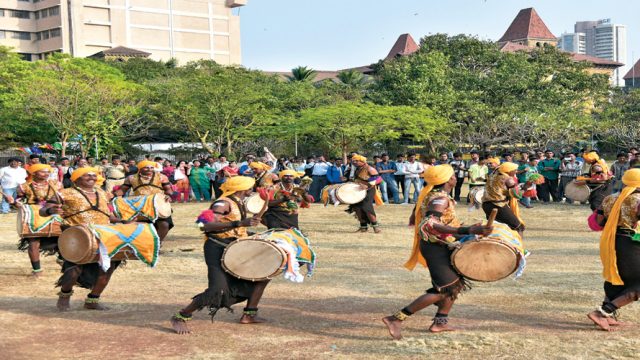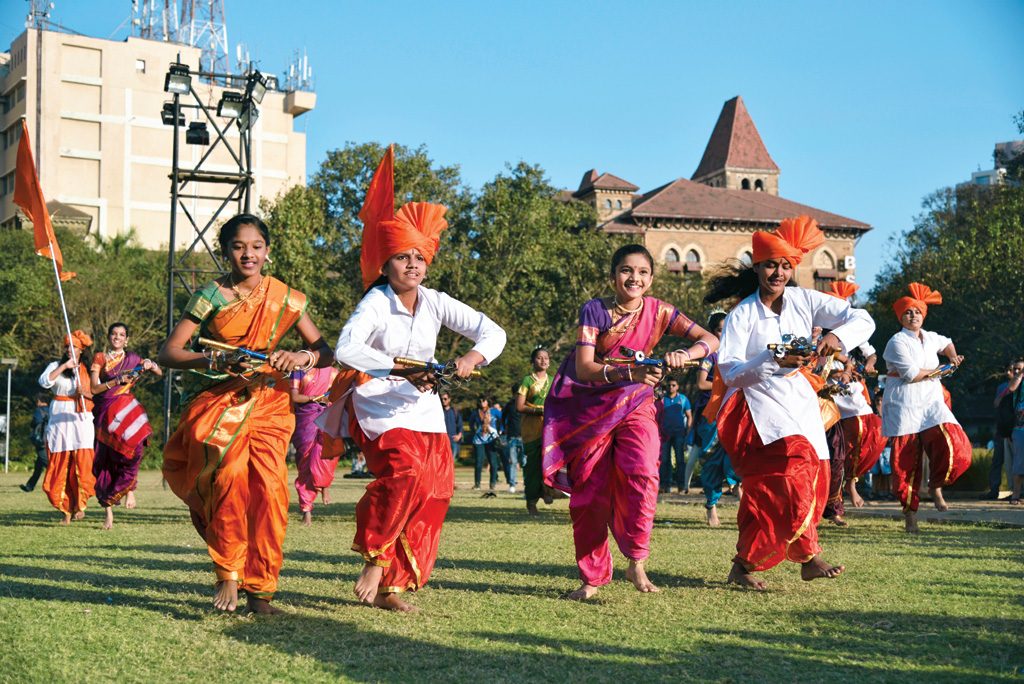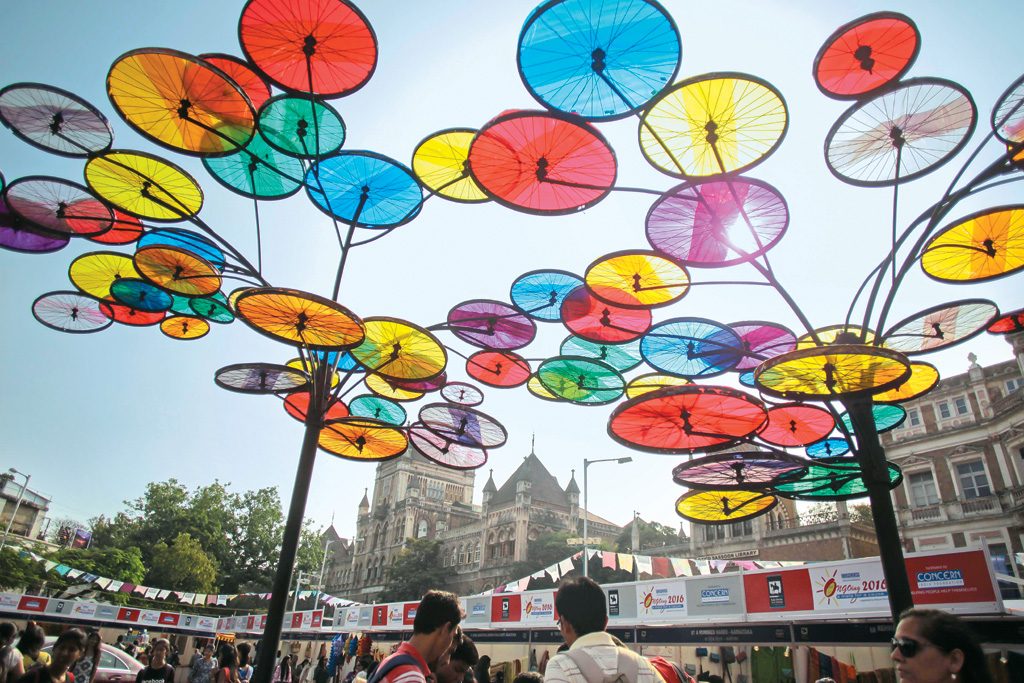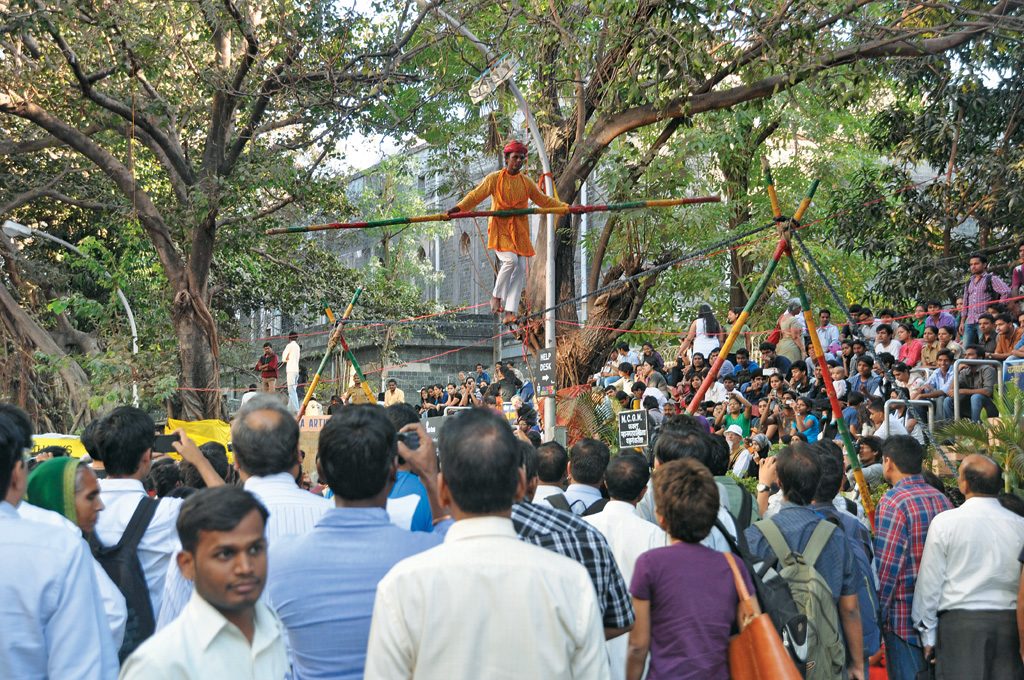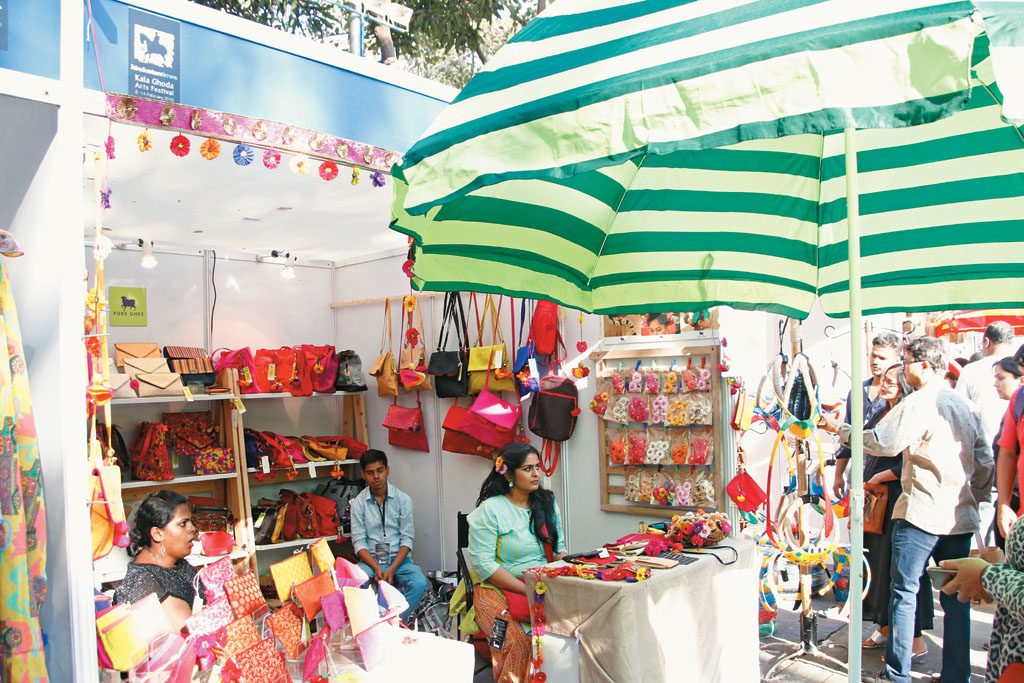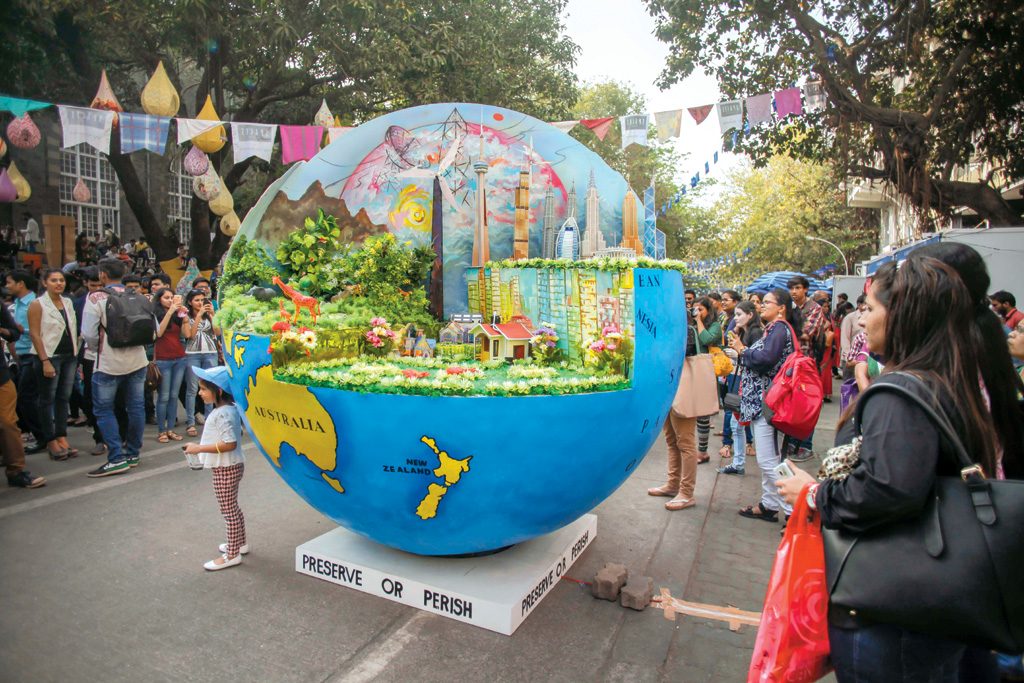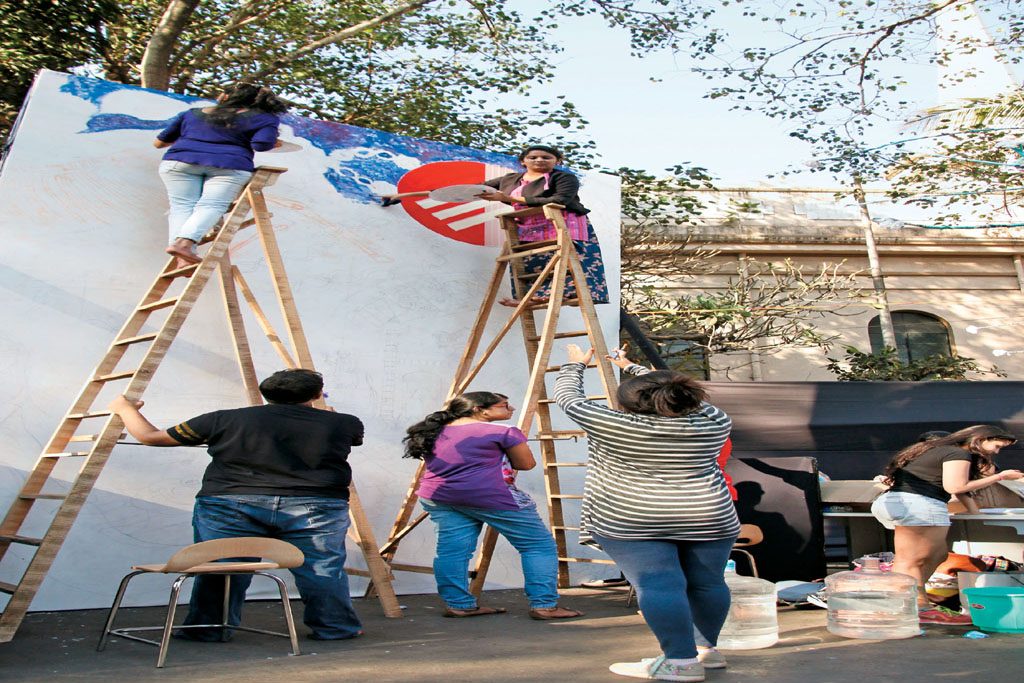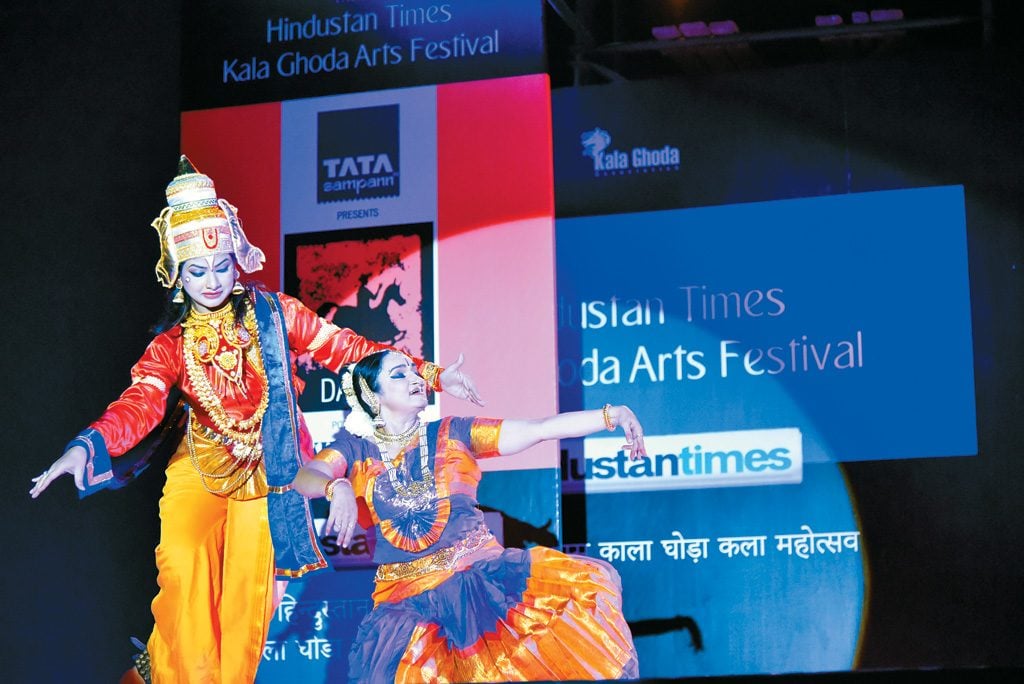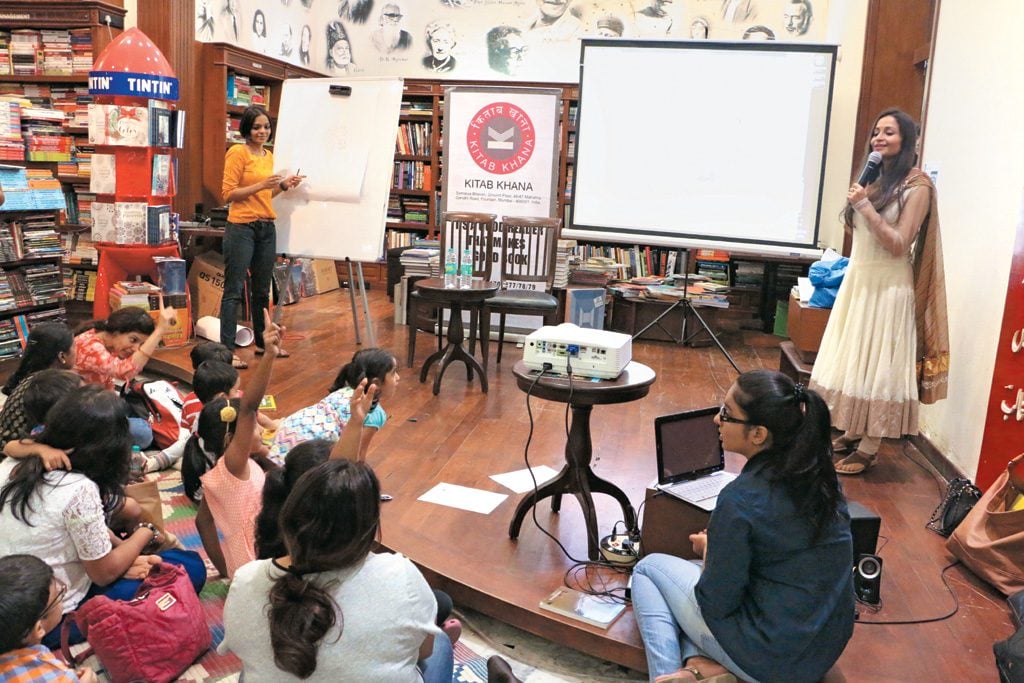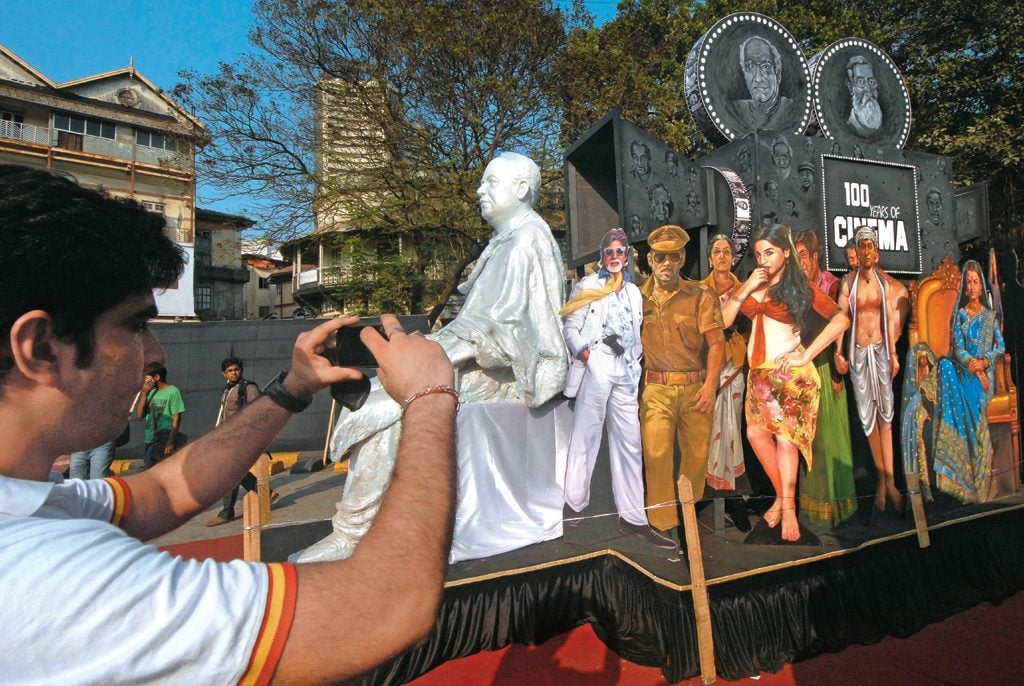Type Arts Festival Time 9 Days In February Location Kalaghoda, Mumbai
Once upon a time, in the centre of the large node on Esplanade Road, Bombay, stood a statue of King Edward VIII astride a black horse, or a kala ghoda in Hindi. In fine disregard for the monarch, city dwellers informally named the area after his mount,” explains the website of this nationally famous, nine-day arts festival that takes place in February. The area is home to many galleries and museums. A wealth of colonial buildings dot its tree-lined streets. It seems fitting that an arts festival be held against this backdrop.
Ever since 1999, the Kala Ghoda Festival has been receiving visitors from across the world. For the intellectual type, the David Sassoon Library beckons. The streets outside are brimming with art on display. Music throbs from the amphitheatre like an amphetamine heartbeat. Food and crafts stalls are under siege by happy people. Movies are being screened, performances staged, some crafted specially for the occasion. As an afficionado blogs: “Families wander around… curiosity writ large on their faces. Corporate types step out to ‘catch the fest’, ties loosened around their necks…. Tourists bustle about, wide-eyed at the colour. Teenagers mill about, their natural energy once shared by everyone in the crowd….” For a few days, this charming tree-lined, historical-monument-studded place turns into a cultural theme park.
Street graffiti. Airbrushed bikes. Electric cars dressed to go to town. Photographs of the Kala Ghoda syline. Murals. These are just some of the creations displayed on the area’s streets and in the galleries. But viewing the works of others is not the only way to participate here in the Kala Ghoda Festival – there are workshops on print-making and painting to ensure active involvement of the visitors. There is also the Crafts Bazaar where various artistes converge and set up makeshit stalls to sell and display their folk-art wares. Most items sold here are colourful and have an Indian touch to them.
The David Sassoon Library is the venue for most things literary. There are poetry slam events, flash essays, flash fiction, etc. that one can participate in.
Live music and dance performances are held at the amphitheatre every day at dusk. These include musicians playing out jazz, blues and rock songs and people dancing to Bollywood numbers and Lavani (Maharashtrain folk dance). Futher, there is cinema. From experimental film to social drama, from comedy to silent film, it’s all up for viewing at various venues ranging from Eros Preview Theatre to the Museum Gallery to Max Muller Bhavan. At nearby Horniman Circle and National Gallery of Modern Art, actors perform full-length plays, monologues and the like to full houses. To give a true flavour to the festival, food must feature. Not far from the Crafts Bazaar, popular restaurants set up temporary stalls.
Pretty much like the excitement of the festival, palpable but hard to define, some of the events are unclassifiable: photography work-shops, heritage walks around the Fort area, Capoeira performances, street plays by NGO kids, workshops that merge Indian Classical dance forms with Zumba and turn into fitness sessions. Take your pick!
- Scenes from various venues across the Kala Ghoda Festival
The Festival
“Since the festival started, Kala Ghoda has become a tourist destination and forerunner to all of India’s art festivals, including the Jaipur Literature Festival. There’s nothing like this,” says Brinda Miller, the festival’s director and renowned artist. Miller said that the Kala Ghoda Association, a collective of artists and art institutions that organises the festival, gets inquiries from both artists and performers from across India, about the festival. “This is the reason we have a theme each year, to bring a sense of cohesion to the event,” she said. The theme for 2016 was ‘Crossing the threshold’.
All categories have their own curators to ensure that the artists and performers and their presentations are in keeping with the theme, Miller adds.
Another attraction of the festival is that all the activities are completely free, although there is limited entry for each that is usually accepted on a first-come-first-served basis.
But don’t think that the festival is only for grown-ups; far from it. In fact, Miller says that the children’s literature section is one of the richest. With loads of storytelling sessions, arts, crafts and animation workshops and talks, featuring well-known names such as Anushka Ravishankar, Bittu Sahgal and Sudha Murthy, the kids’ lit section of the 2016 edition was unmissable. Bear in mind that there is an entirely different section for children who attend the festival.

Children
The Tara Sharma Show
This is an interactive session with children and their parents discussing various topical parenting issues.
Discovering Indian Music
Children can rediscover the rich, traditional folk music of our diverse land through songs, games and other performances.
Wheel Pottery
Children can try their hand at the potter’s wheel and paint clay medallions.
Dance
Classical, modern hip-hop, fusion and belly dancing are some of the dance forms one gets to see here. Many performances also feature fusion of various styles and genres as well as efforts to contemporize classical forms.
Theatre
The performances include adaptations and inspirations from popular plays. Marathi, Hindi, Gujarati are the languages that the plays were staged in.
Literature
For both adults and children alike, various book readings and workshops are conducted by established as well as emerging writers.
While the activities meant for children are held at the sprawling Kitaabkhana bookstore, the ones for adults take place in the garden of David Sassoon Library.
- Bharatanatyam recital
- A workshop
- Bollywood cutouts
Cinema
The curators of the festival present a mix of new and old movies, in English, Hindi and Marathi, across various genres, for adults and children alike.
Heritage Walk
There is a concise one-hour tour of South Mumbai’s heritage monuments such as the Gateway of India, Taj Mahal Hotel, Mumbai University, High Court, Victoria Terminus (Chhatrapati Shivaji Terminus), Asiatic Society amongst others. There is also a cycle rally organised for touring these areas.
Music
Some of the interesting artists who performed at the festival in 2016 were Symphony Orchestra of India (children), Amaan and Ayaan Ali Khan, Luke Kenny, Shibani Kashyap and Ayushmann Khurrana.
Visual Arts
Decorating the Rampart Row, the parking lot and Rampart galleries, the pieces of art displayed here prompt the audience to pause, contemplate, reflect and discuss various social issues portrayed in them.
Workshops
From travel writing to photography, puppet making to haiku writing, workshops at Kala Ghoda 2016 covered an extensive range of subjects and interests. A great way to learn new skills and even discover near-extinct arts. The workshops were engaging and interactive. Other interesting ones were Chinese calligraphy, Greek hot wax painting, crochet knitting and papier mache.
On the Streets
Bahurupiyas, puppet shows, puppet parades and kachi ghodis liven up the atmosphere at the festival.
What Else to Do
Flamingo Spotting
The Bombay Natural History Society (Hornbill House, Opposite Lion Gate, Shahid Bhagat Singh Road, Tel: 022-22821811, 8879101310) organizes flamingo tours to watch flocks of the migratory birds that descend on the harbour-side suburb of Sewri (about 9km from Kala Ghoda) in February, coinciding with the Kala Ghoda Festival. Taking a cab is the best way to get there. Finding the exact location can be tricky in the narrow bylanes and you may have to ask for directions to ‘flamingo or bird place.’ Check tide timings beforehand as the birds are closest just after the high tide water is receding so as to feed on the marine critters left behind.
Where to Stay
The Taj Mahal Palace and Towers (Tel: 022-66653366; Tariff: on request) has been offering the best views of the sea and the Gateway of India for over a century. You can call it an institution rather than a hotel. Known for its consistent high-class service, the hotel is one of the best properties in the city that one can stay at. If you want to really make most of your stay, get a room in the heritage wing. The Oberoi (Tel: 66325757; Tariff: ₹25,000–7,50,000) at Nariman Point is a stunning property. The 5-star facility has been consistently rated as one of the best hotels in the city.
Residency Hotel (Tel: 66670555, 22625525; Tariff: ₹4,100–4,600) on DN Road is a pleasant and reliable hotel that recently renovated its rooms with smart decor. Causeway Hotel (Tel: 22817777/ 2222/ 3333; Tariff: ₹3,200–4,000) is located in the busy Colaba market, opposite Colaba Police Station. You can easily miss the entrance to the hotel, which is through a very small corridor, on the sides of which are shops. The rooms are reasonably sized and clean. Chateau Windsor Hotel (Tel: 66224455, Cell: 093248 18169; Tariff: ₹3,300–7,250) is a value for money hotel and offers comfortable beds, spacious rooms and large bathrooms. It is very close to Marine Drive, the boulevard that runs along the city’s coast.
Bentley’s Hotel (Tel: 22841474/ 733, 22882890/ 0442; Tariff: ₹1,600–2,850) is a no-frills bed and breakfast accommodation with large rooms in a colonial building. It’s about half a kilometre from the iconic Gateway of India. Another B&B option is Sea Shore Hotel (Tel: 22874238; Tariff: ₹1,100–1,200) on Arthur Bunder Road. The rooms are small but they are immaculately clean.
Where to Eat
Amongst the local legends is Colaba’s Bade Miyan, which serves non-vegetarian rolls throughout the night. Unmissable institutions – all on Colaba Causeway – include Café Leopold, overflowing with foreign tourists; Café Mondegar, with Mario Miranda on the walls and a jukebox as famous as the draught beer; and Olympia, an old joint for inexpensive, authentic Chilla Muslim fare.
Apoorva, near Horniman Circle, is great for Mangalorean seafood. For lip-smacking neer dosa and crab, there’s Mahesh Lunch Home, Fort. Trishna Restaurant at Kala Ghoda serves great crab. Swati Snacks in Tardeo is the place for excellent Gujarati fare. Their panki chutney is great, the methi roti with peru shak is outstanding, and their fada ni khichadi is popular. Britannia, an old-fashioned Parsi eatery in Ballard Estate, has delicious berry pulao and caramel custard. Jimmy Boy, off Horniman Circle, also serves Parsi cuisine. Paradise at Colaba Cause-way serves Parsi, Chinese and Continental cuisines. Indigo near the Gateway of India and Indigo Deli at Apollo Bunder offer varied Continental choices.
Try Theobroma’s bakery products in Colaba Causeway; Moshe’s Café, Kala Ghoda and Ideal Corner, Fort; and drop by Nutcracker in Kala Ghoda for great breakfast options and Burma Burma to get a taste of Myanmar’s cuisine.
FAST FACTS
Festival Organiser: Kala Ghoda Association; Tel: 022-65055034; kalaghodaassociation.com
Timings The events begin at 10.00am and some go on till about 10.00pm. The art exhibitions are ongoing. All events are free. Some require you to call and book in advance. Even if you have booked over the phone, it’s best to be early for the event, in order to get the best seats
Tourist Office: Maharashtra Tourism Development Corporation, Central Reservations, CDO Hutments Opp LIC Bldg, Madame Cama Road Mumbai; Tel: 22044040, 22845678, 24211690
STD code 022
Getting There
Air Mumbai’s Chhatrapati Shivaji International Airport is connected to all major international destinations and metros and other cities across India. From the airport, the Kala Ghoda precinct is a 2-hr drive during rush hour, and a 1-hr journey otherwise. A taxi from the airport costs ₹1,200 approx
Rail The closest railway station is Churchgate, a taxi ride works out to Rs.21 approx for a 10-min drive. Or you could also cover the journey by foot
Road The city has an excellent bus network and plenty of taxi rental operators. Fares will vary according to timings and places to be visited




